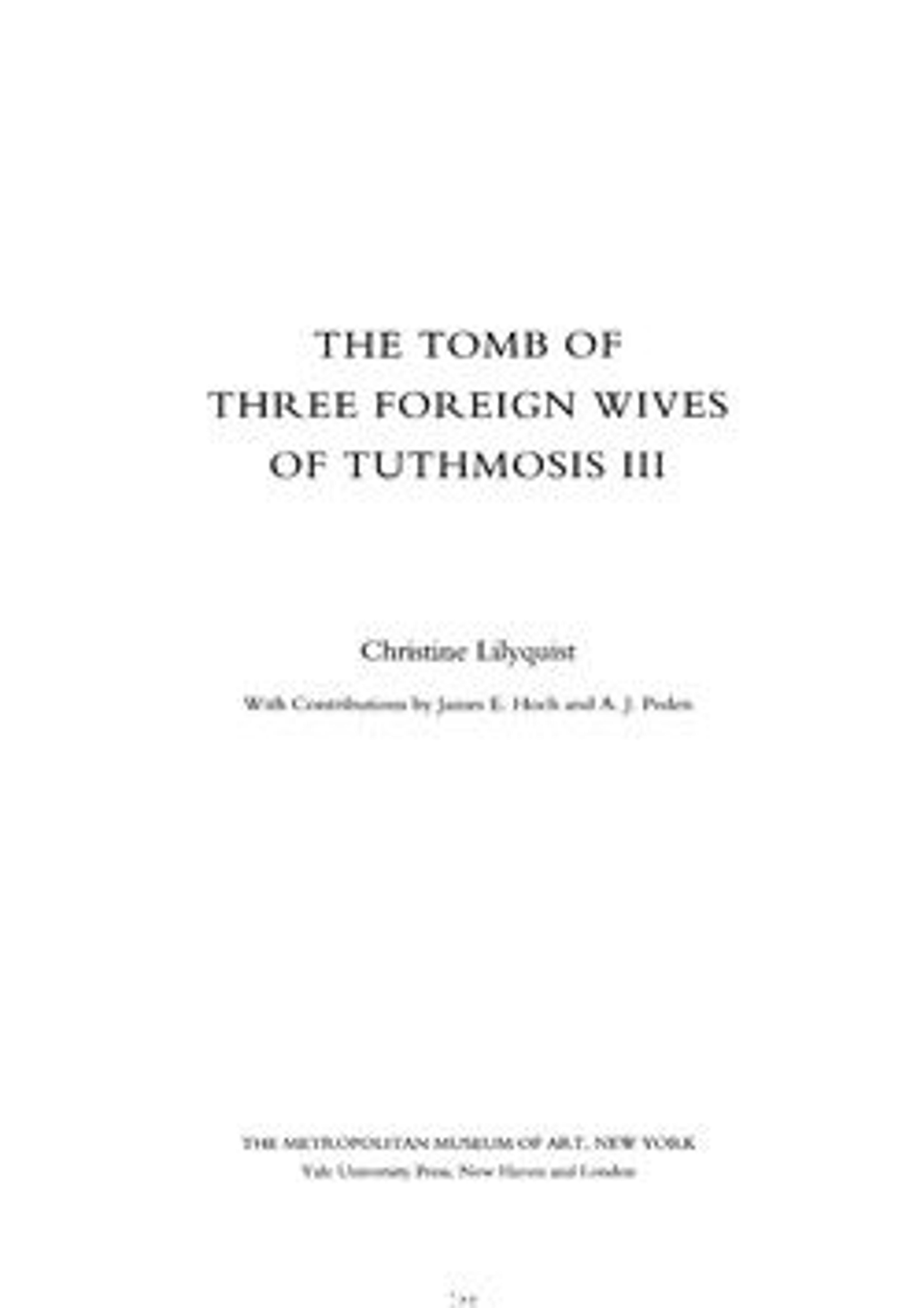Canopic Jar of Manhata
Two canopic jars inscribed with the name Manhata are on display in the Museum (18.8.1a, b, .3a, b). These are part of a set of jars that once held the four internal organs that were removed during the mummification process. Each is inscribed with a text placing the organ inside under the protection of one of the Four Sons of Horus.
Manhata, whose name suggests that she came from western Asia, also had a silver libation jar (18.8.22a, b) and a heart amulet (26.8.144) inscribed with her name.
Manhata, whose name suggests that she came from western Asia, also had a silver libation jar (18.8.22a, b) and a heart amulet (26.8.144) inscribed with her name.
Artwork Details
- Title:Canopic Jar of Manhata
- Period:New Kingdom
- Dynasty:Dynasty 18
- Reign:reign of Thutmose III
- Date:ca. 1479–1425 B.C.
- Geography:From Egypt, Upper Egypt, Thebes, Wadi Gabbanat el-Qurud, Wadi D, Tomb of the Three Foreign Wives of Thutmose III
- Medium:Limestone, blue paste
- Dimensions:H. jar 31.8 cm (12 1/2 in.); h. jar with lid 41.8 cm (16 7/16 in.)
- Credit Line:Rogers Fund, 1917
- Object Number:18.8.1a, b
- Curatorial Department: Egyptian Art
More Artwork
Research Resources
The Met provides unparalleled resources for research and welcomes an international community of students and scholars. The Met's Open Access API is where creators and researchers can connect to the The Met collection. Open Access data and public domain images are available for unrestricted commercial and noncommercial use without permission or fee.
To request images under copyright and other restrictions, please use this Image Request form.
Feedback
We continue to research and examine historical and cultural context for objects in The Met collection. If you have comments or questions about this object record, please contact us using the form below. The Museum looks forward to receiving your comments.
